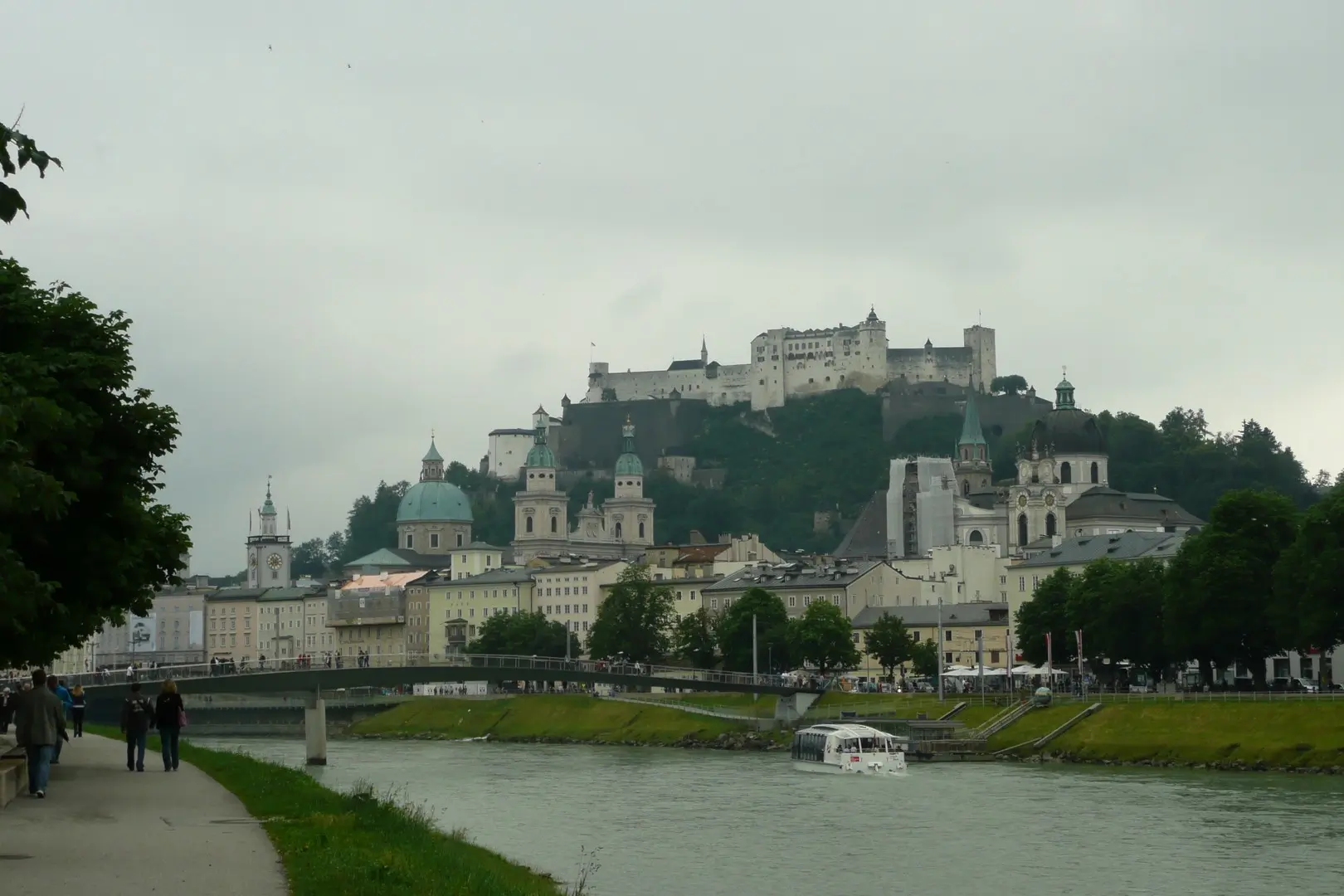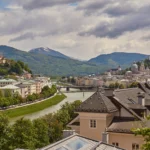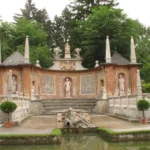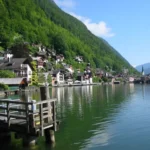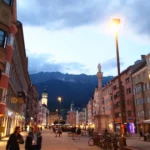Last Updated on 01/08/2023
Salzburg was ruled by prince-archbishops. Since they were archbishops, there are so many churches in Salzburg old town. But at the same time they were princes and led a completely princely and secular lifestyle. For wartime, they had the Hohensalzburg fortress, which was never taken and was only once surrendered without a fight to Napoleon’s troops. Below, under the fortress, they built the Residence for themselves, and then (obviously, it seemed a little crowded) the New Residence.
Across the Salzach River, a 15-minute walk, Archbishop Wolf Dietrich arranged for himself, his mistress and 15 children a “country” house – Mirabell with a garden. And an hour’s walk from the fortress, another archbishop, Markus Sittikus, built himself a “cottage” – the Hellbrunn Palace with a vast park and water play.
Salzburg Hellbrunn palace, museums
Sounds of music filming locations in Salzburg and Salzkammergut
Salzkammergut best places to visit map
Hallstatt old town – history and natural jewel
Salzkammergut Lakes
Tennengau, Pongau, Dachstein attractions map
Werfen Ice cave
Hohenwerfen Fortress
Liechtenstein gorge Austria
A little history
Settlements on the site of Salzburg arose a very long time ago, there were Celts and Romans. And already at the end of the 11th century the fortress Hohensalzburg was built.
The reason, of course, is the rich salt deposits in the region – a tasty morsel for many. Various enemies attacked the city more than once. The prince-archbishops (who owned Salzburg from the end of the 8th century) took refuge in the fortress, and the city was destroyed, almost completely several times. Therefore, there is not much old architecture in the city and most of the temples have a baroque look.
Salzburg old town
Salzburg old town turned out to be not at all as big as it seemed. Half an hour by bike from the fortress – and you are already outside the city. Its main disadvantage is the huge crowds of tourists of all nationalities and very changeable weather. The chance of rain is high, you can ignore the weather forecast and take an umbrella.
It takes about 4-5 hours to explore the city center and the fortress
walk along Mönchsberg (from the lift at the end of Griesgasse to the fortress) – plus 1 hour,
Hellbrunn – plus about 3 hours.
There are also many potential day trips – about them at the end of the topic.
Hohensalzburg fortress
For their Hohensalzburg fortress (the largest completely preserved fortress in Central Europe), the prince-archbishops chose the Festungsberg hill. It can be reached by funicular, but you can walk up the steep path from St. Peter’s Abbey (10 minutes maximum) or take the elevator to Mönchberg and walk up to the fortress on the top, at the same time looking at the wonderful views of the city.
Mönchsberg’s views
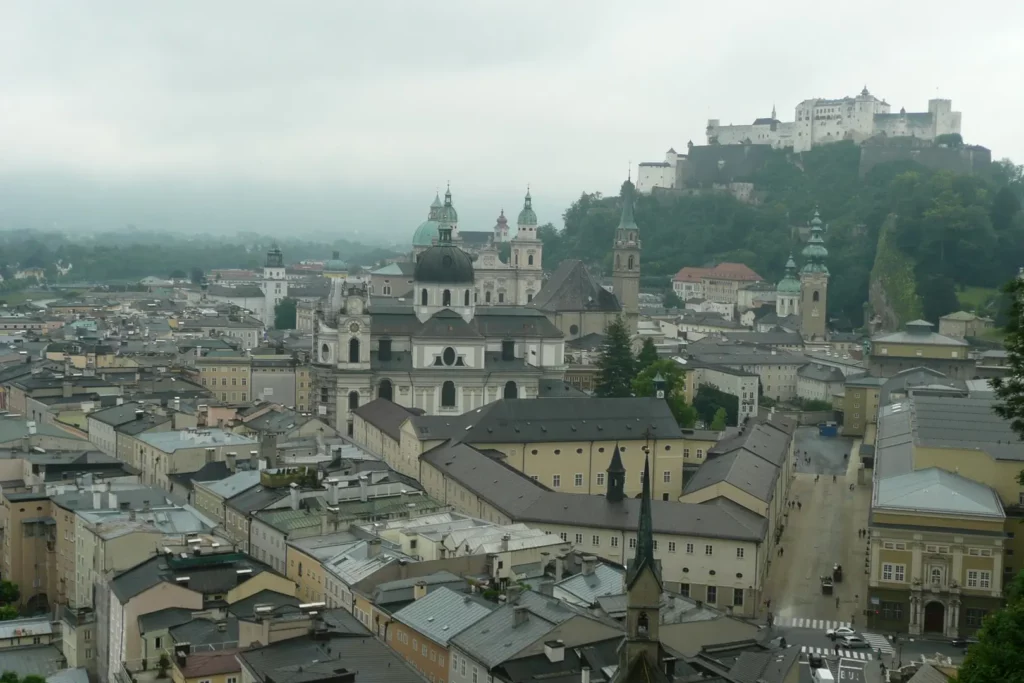
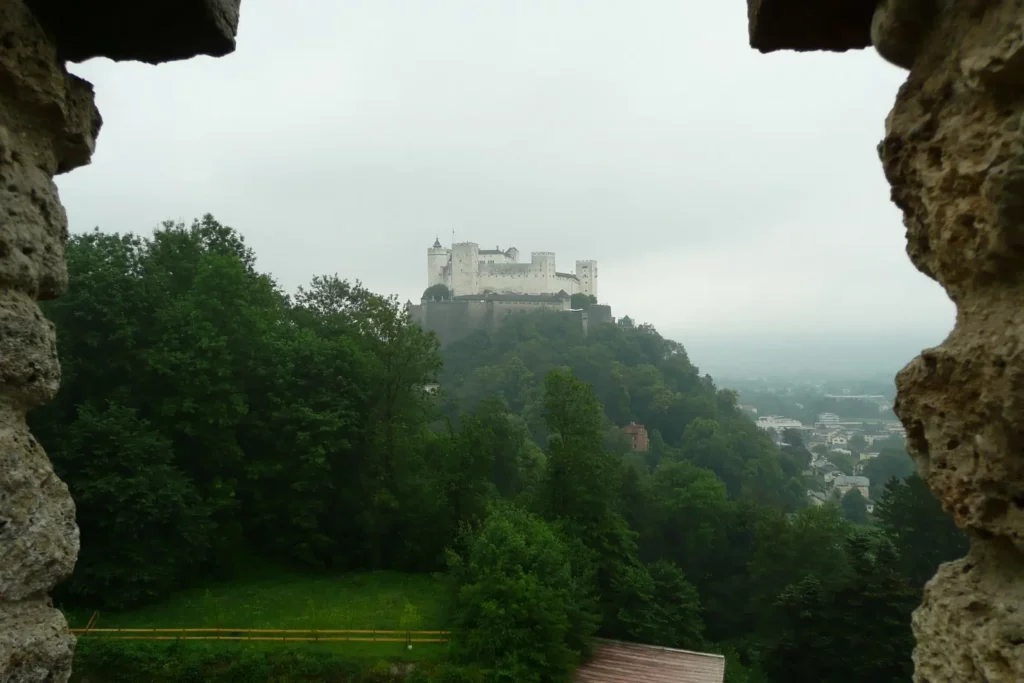
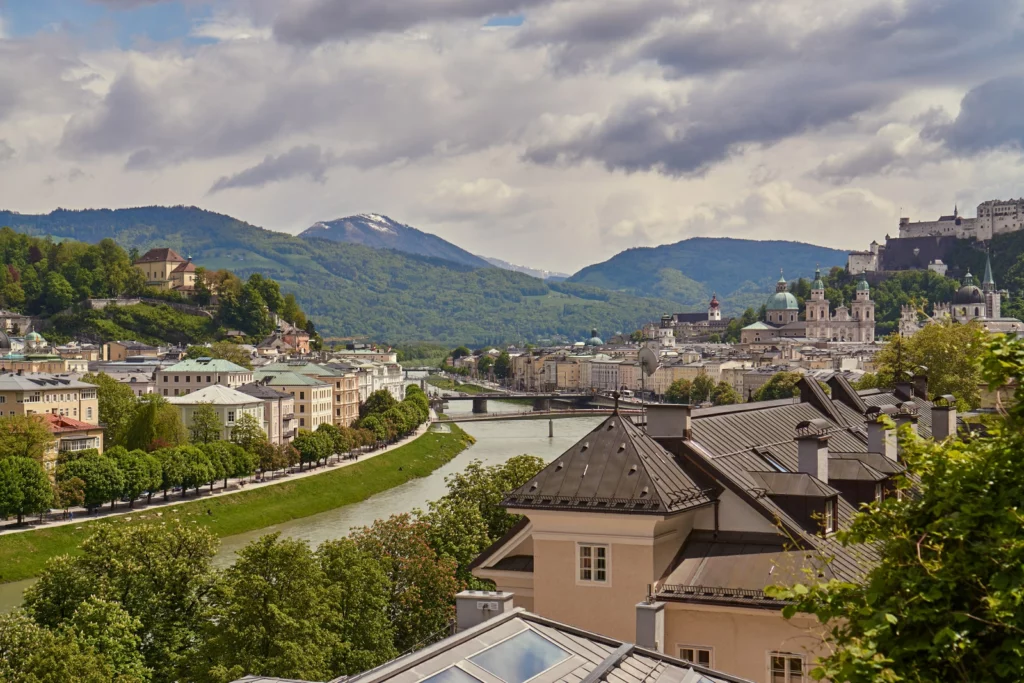
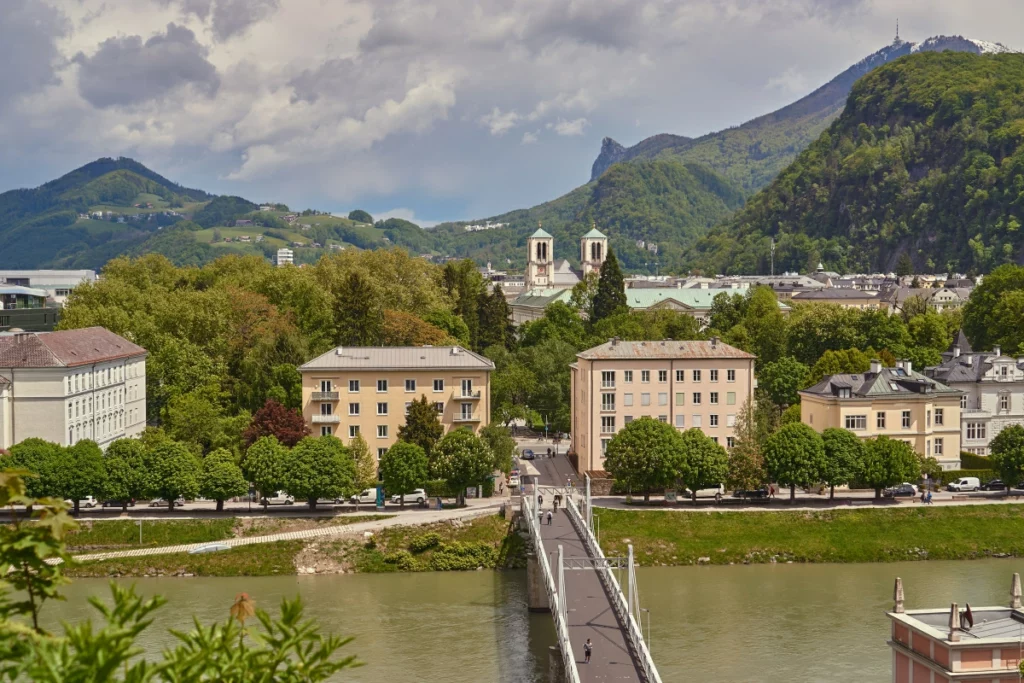
It is not surprising that it was impossible to take Hohensalzburg fortress: there are sheer walls on the outside, and a road with a slope of 45 degrees leads inside – it’s not easy to go there without any hostile intentions, let alone military operations!
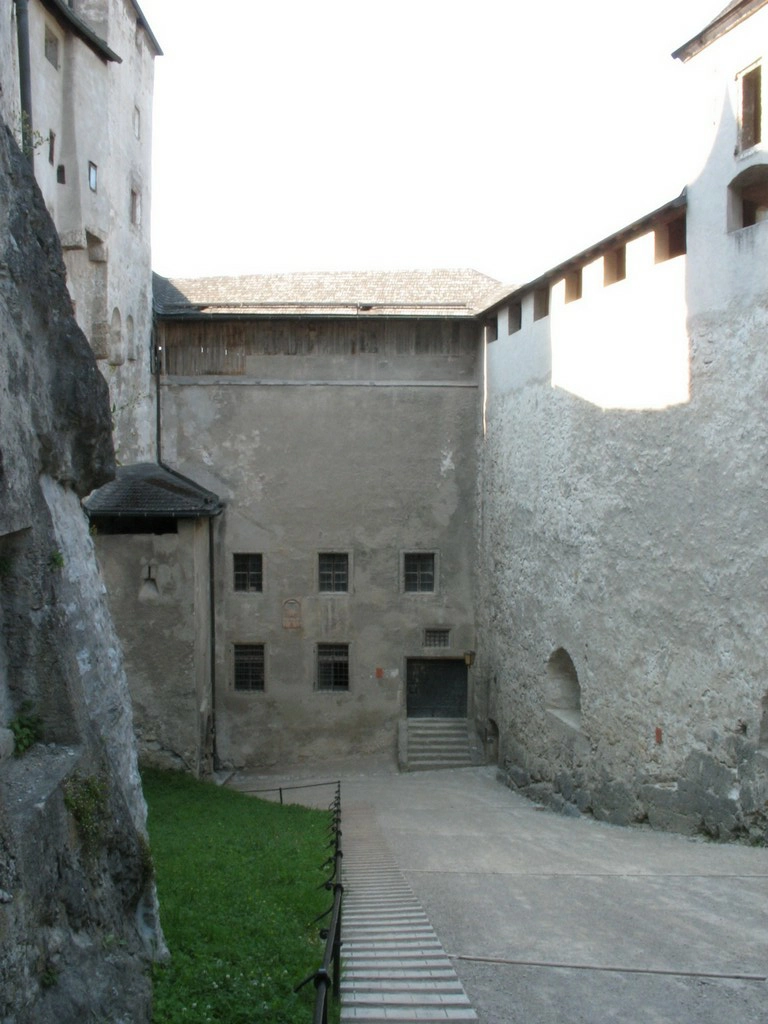
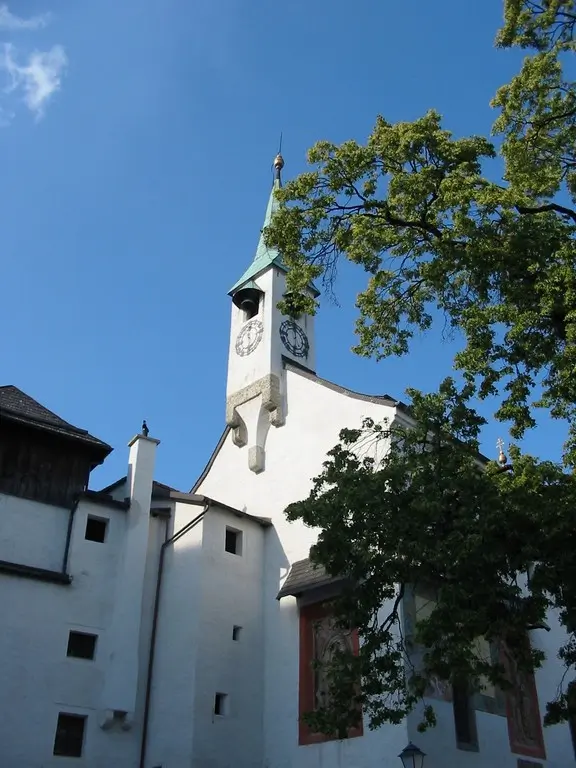

The fortress offers two routes.
The first is an excursion (there are also audio guides): history of the fortress, “Salzburg bull” (500 years old) climbing to the top of the tower, which offers an excellent view of the surroundings including the Untersberg.
The second is an independent tour of the fortress museum.
You can see the princely apartments (including the golden room with Gothic carvings and ornamental painting and a ceramic tiled stove of 1502), recently discovered fragments of the original building, a collection of historical weapons and furniture, exhibitions dedicated to the wars in which the Austrians participated.
In addition to the princely apartments, the fortress also had military barracks and a prison. In the fortress courtyard, near the water collector of 1539, there is a centuries-old linden tree.
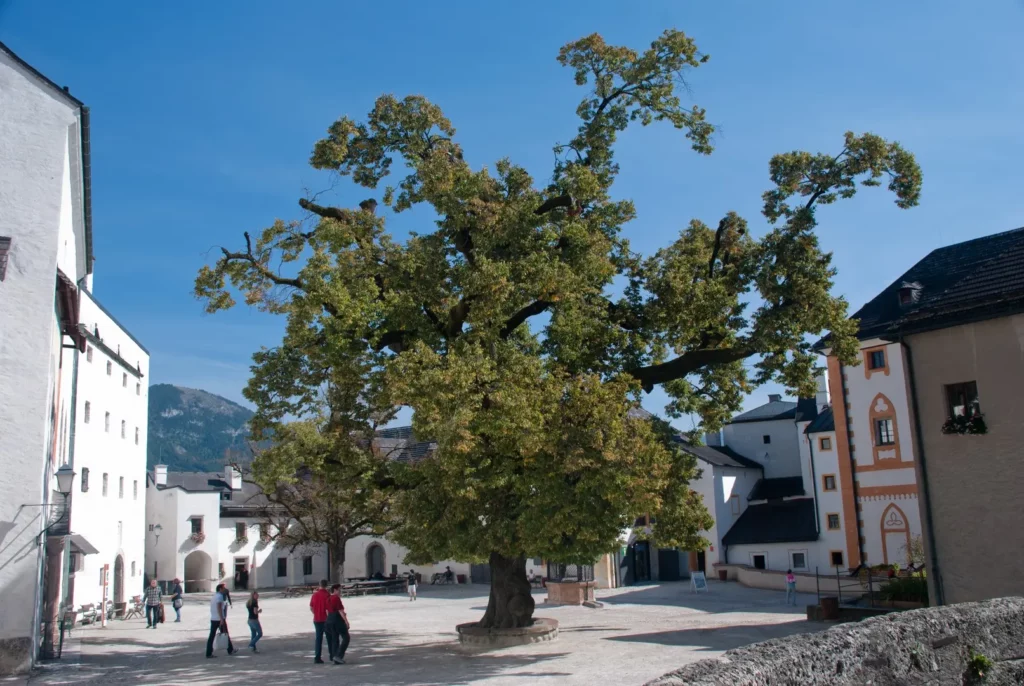
Untersberg
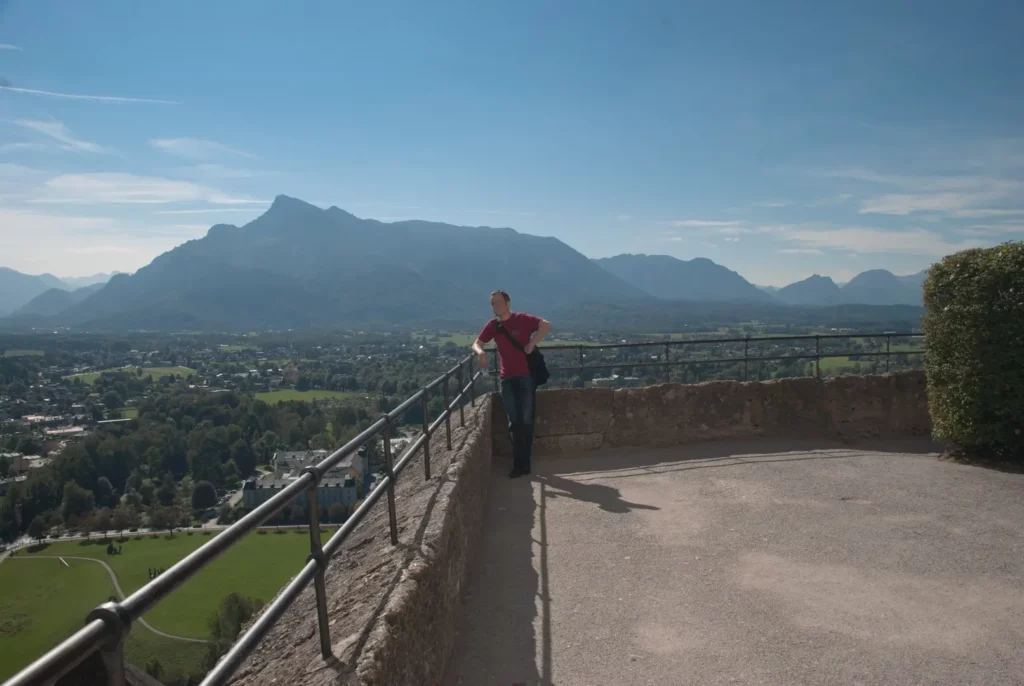
Old and new Residence
The prince-archbishops moved to the residence from the fortress when they no longer feared a military attack. The medieval residence now has the appearance of an early Baroque building of the late 16th century. The appartments are open to the public, used by the archbishops for receptions and housing, and an art gallery, which displays works by European artists of the 16th-19th centuries, including Rubens.
Today part of the palace is occupied by the Paris Lodron University of Salzburg.
On the tower of the New Residence there are chimes – Glockenspiel (carilion), consisting of 35 bells. The largest bell weighs 380 kg, the smallest weighs 16 kg. The clock started working in 1705 and plays about 40 pieces, many of which were specially created by Haydn and the Mozarts (both father and son).
The clock plays at 7.00, 11.00, 18.00.
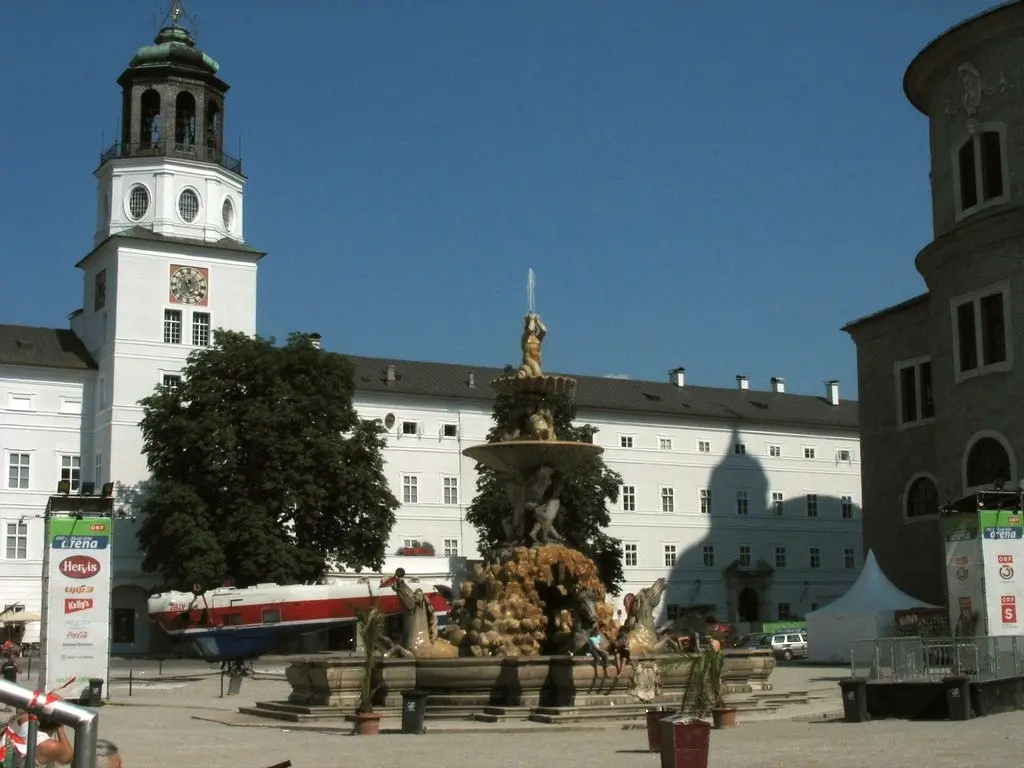
Mirabell park
The standard group sightseeing tour starts from Mirabell: Mirabell – Mozart’s house/Getreidegasse – Kollegienkirche – Cathedral plus/minus Hohensalzburg and welcome to the exit.
Once it was a spacious garden and a palace, but the fire destroyed almost the entire palace, except for the main marble hall and stairs. And the gardens aren’t so great anymore. But it’s still worth a look here, and it’s better early in the morning, until the crowds of tourists block the flowers.
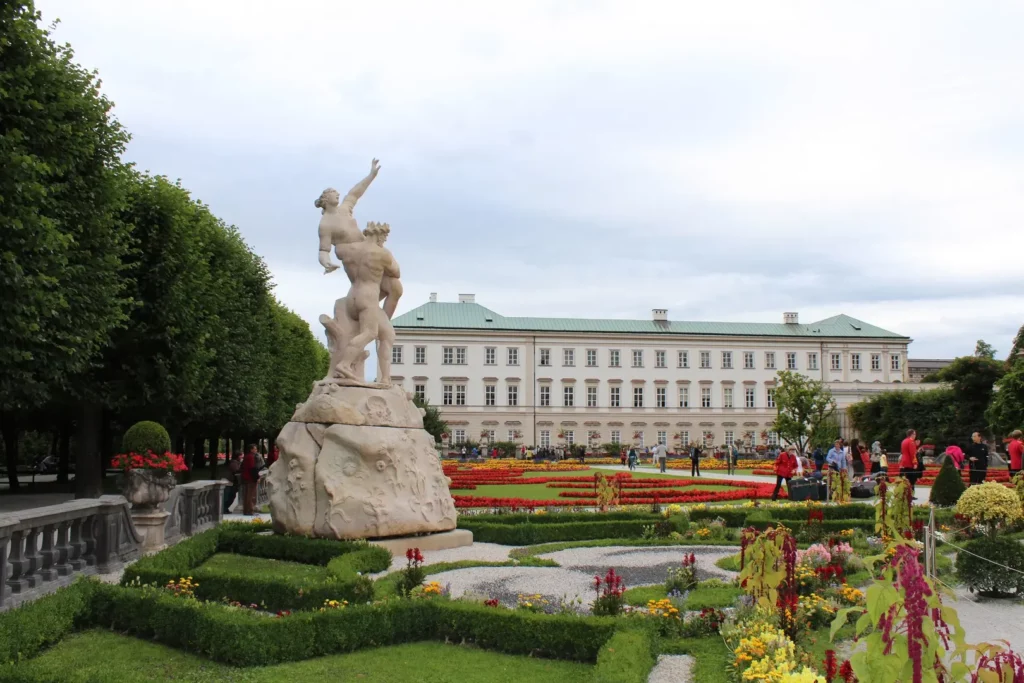

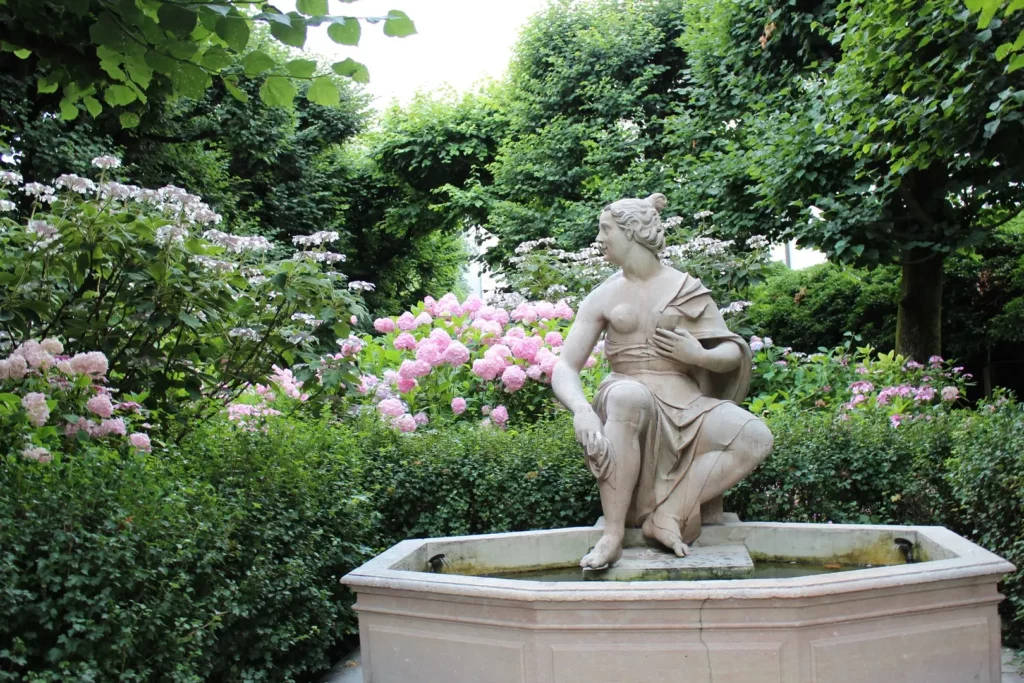
Walk along the side paths, look into the green theater and do not forget to walk through the garden of dwarfs (from the statue of Pegasus up the stairs and then across the bridge).
The ugly dwarfs were carved out of marble as a form of garden entertainment, then they were hidden as raising bad feelings in children, and in our time they were found and restored.
The palace houses the city administration, weddings and concerts are held in the marble hall.




Streets, squares and churches in Salzburg
The Salzburg old town is a rich in churches (we are still in a city that has been ruled by archbishops for several hundred years). Squares and streets created by Italian architects and forming a single ensemble.

1. Cathedral
The Cathedral is located next to the Residence. In front of it is Cathedral Square with a statue of the Virgin Mary. Angels at the cathedral (when viewed from the entrance to the square from the side of the Franciscan church) crown Mary with a laurel wreath.
To the left of the cathedral is the Residence Square (Residenzplatz), to the right is the Capital Square (Kapitelplatz). On the Residence Square, the Residenzbrunnen fountain with water horses. It was created in 1658-1661. Kapitelplatz usually has a large market for tourist souvenirs.



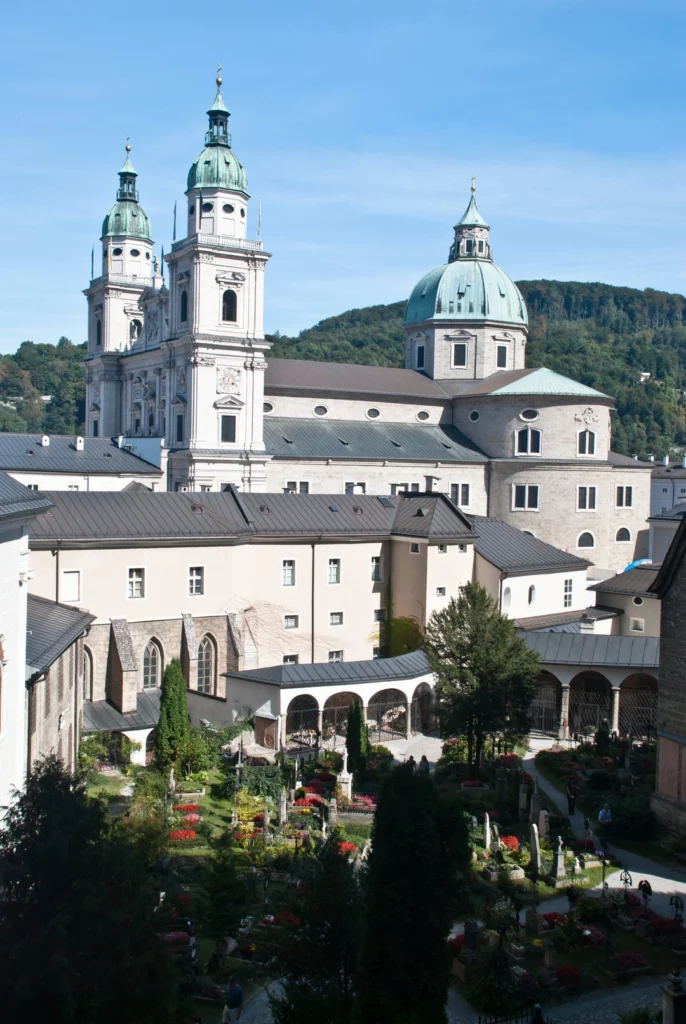
2. Monastery of St. Peter
The oldest still active monastery of the Benedictine order on the northern side of the Alps (founded by St. Rupert (Hroudbert) c. 700).
The church was built between 1130-1143 and is the only Romanesque church in Salzburg. The painting on one column in the main room dates back to the construction of the church. Like all churches in the city, the church burned and was rebuilt. The so-called catacombs, dug into the Mönchsberg rock, are probably of early Christian origin.
In the first (left) photo, the lower church is St. Peter’s, the middle one is the Franciscan church, the far one is the Collegienkirche.
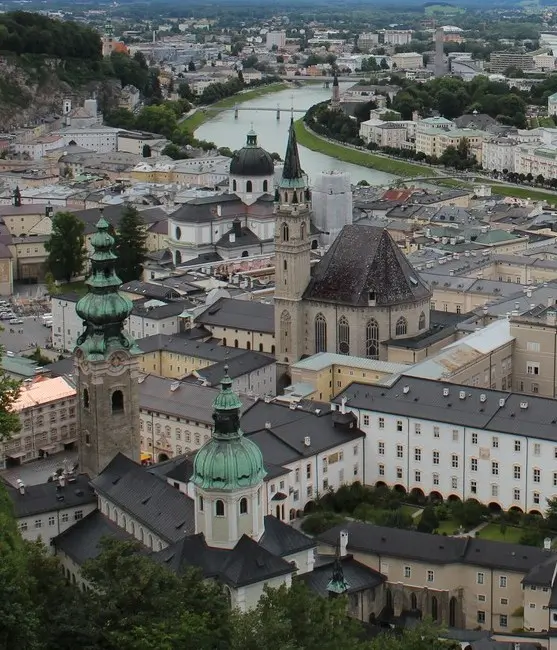
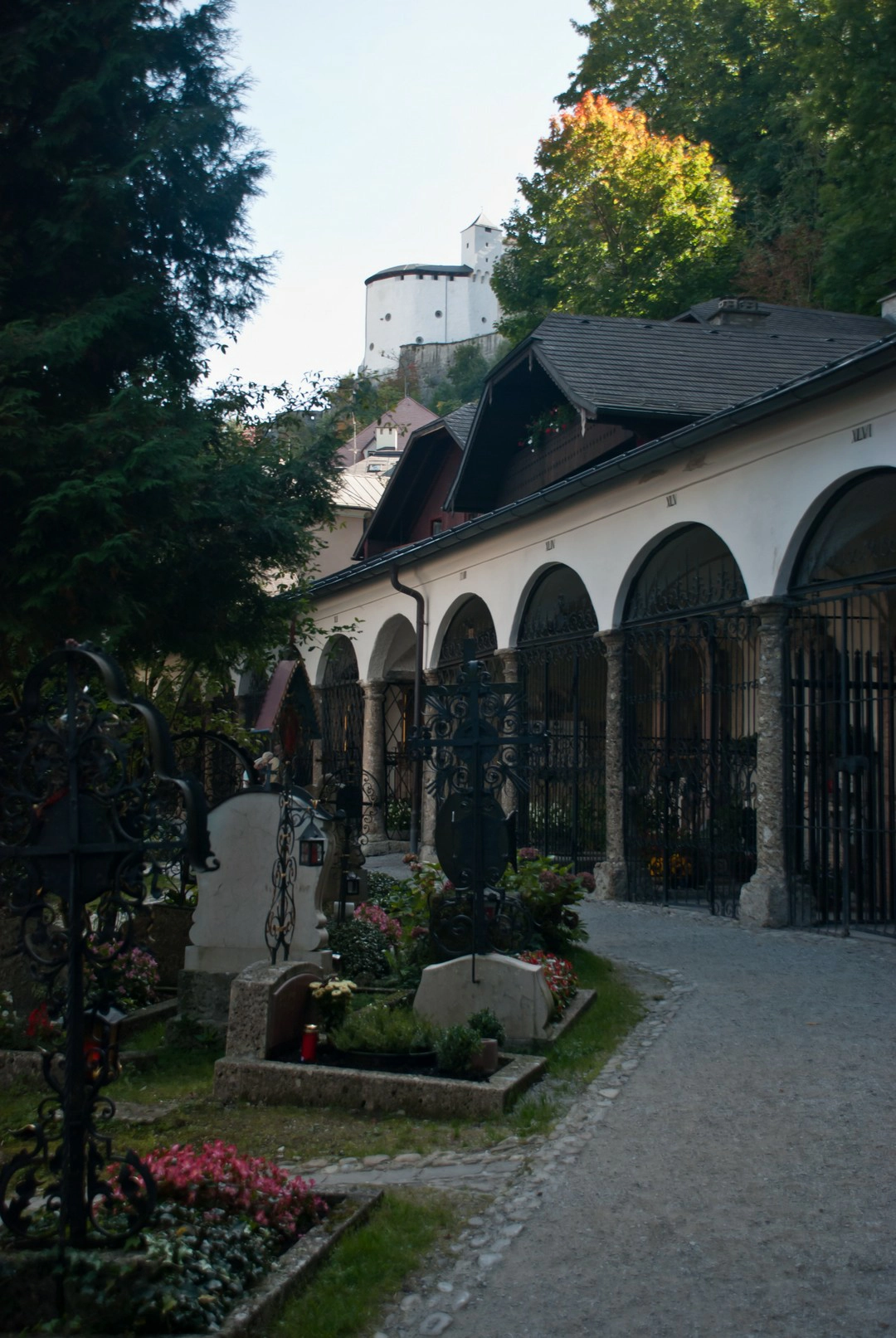

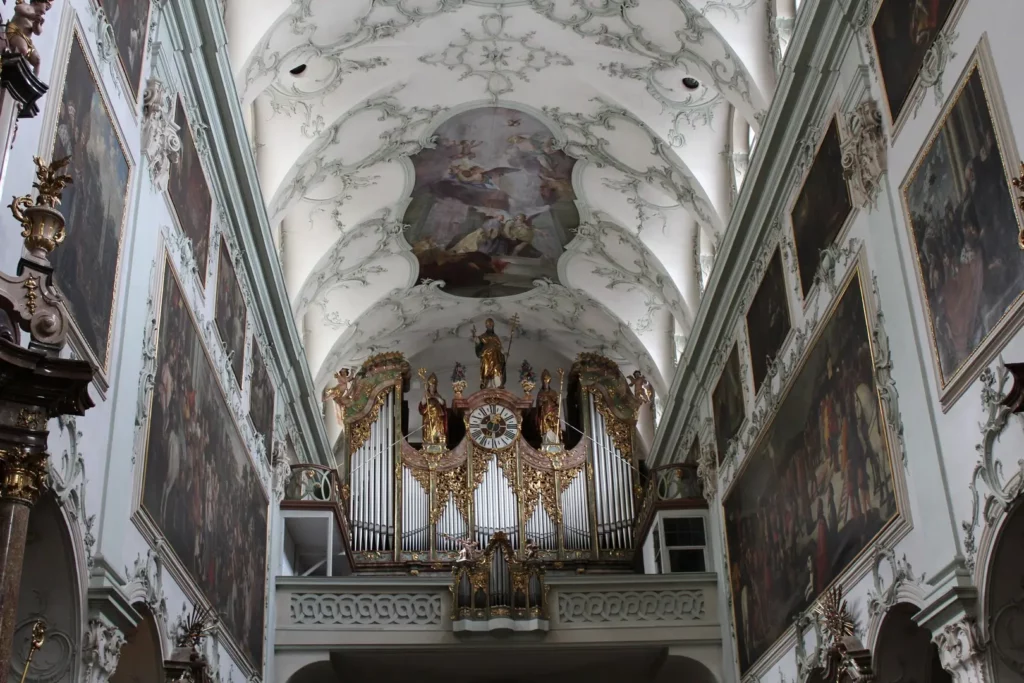
Franciscan church
It is the most interesting church in Salzburg from an architectural point of view, dated 8th c.
If Salzburg Cathedral is the cathedral of archbishops, then the Franciscan Church is the gothic church for the middle class. Like other churches in Salzburg, it was destroyed by fire during the capture of the city by Emperor Frederick Barbarossa in 1167. The church was rebuilt in the 12th century (long body in the late Romanesque style) and at the beginning of the 15th century (kliros with five powerful columns).
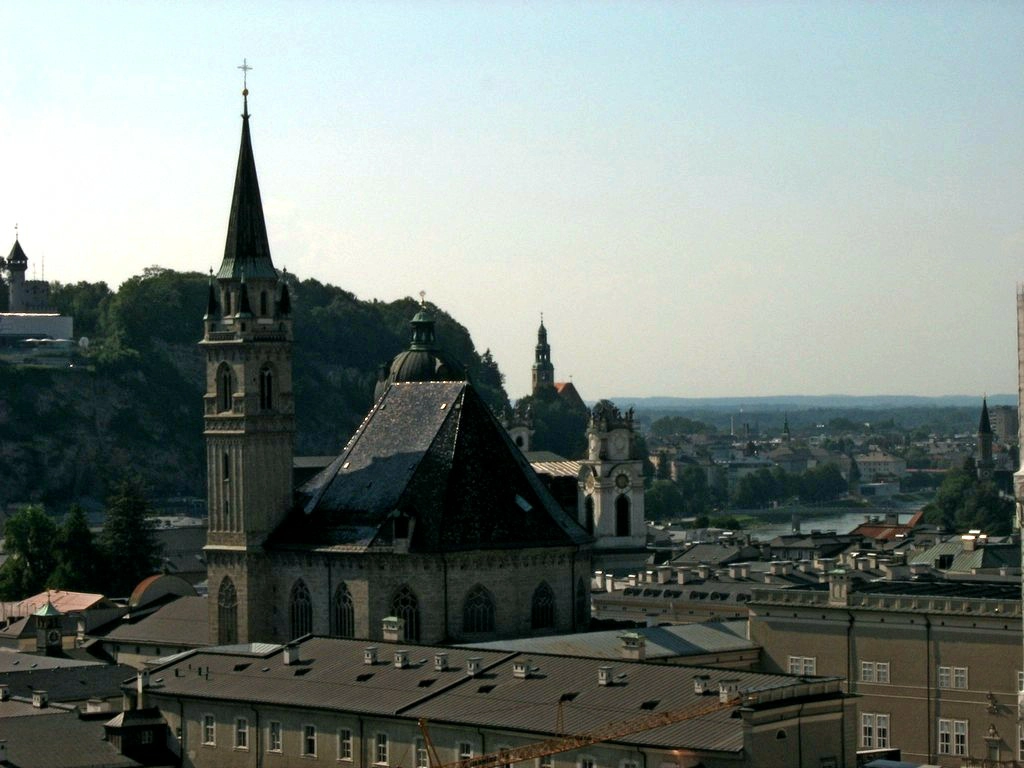
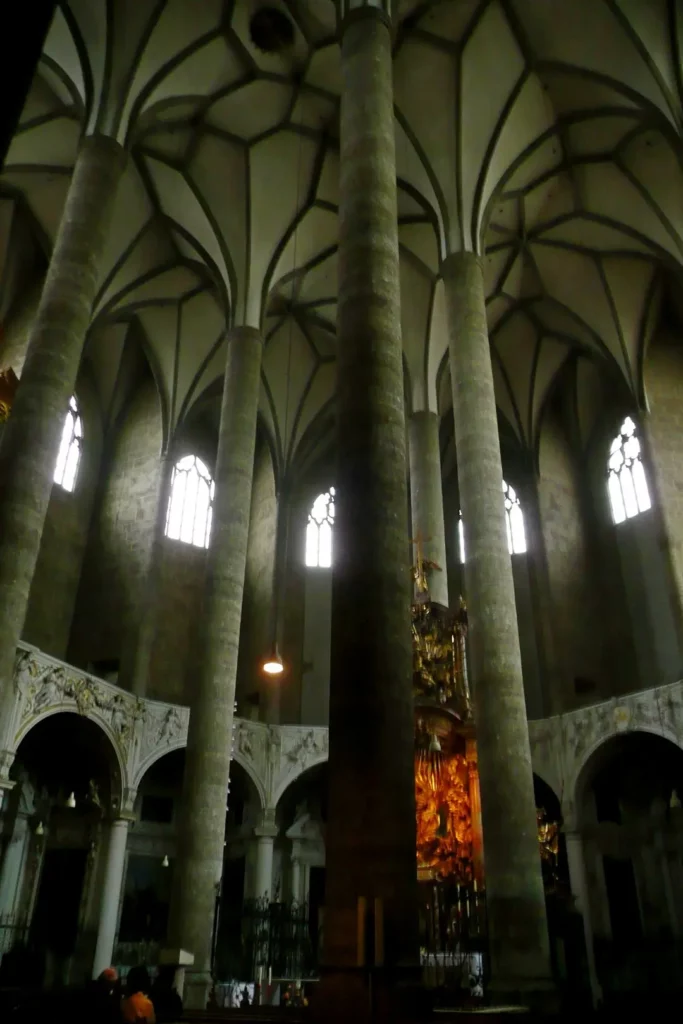
4. Kollegienkirche, aka the University Church
One of the most significant church buildings in Europe, the masterpiece of the architect Fischer von Erlach, who combined various trends in architecture. Construction began in 1696. The consecration of the church took place in 1707.
Tourists usually go to the church along the passage from Getreidegasse and head further to the Cathedral of St. Peter. In front of the Kollegienkirche, there is a small food market – vegetables, flowers, various snacks.
5. Church St. Blasius
It is this church, overgrown with ivy, that tourists see at the end of the Getreidegasse. It was built in 1350 for the hospital, which was located next to 1327 to 1898. The hospital courtyard with arcades is one of the few traces of the Renaissance in Salburg.
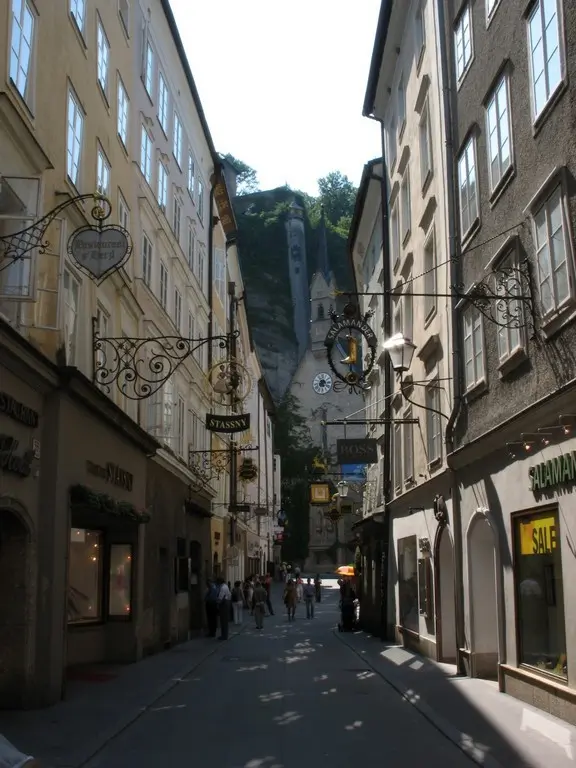
Follow me
6. Getreidegasse
The name “Getreidegasse” has undergone interesting transformations during its existence. It was originally Trabegasse, Trabgasse or Travgasse, from traben (trot, hurry). Later it became Tragasse, Traidgasse, Getreidgasse and finally Getreidegasse. Thus, initially the street had nothing to do with grain (Getreide).
It is typical for houses on this street that the windows become smaller from the first floor to the last. Mozart was born in such house. Even though the houses on Getreidegasse seem very narrow, they are not small, as they continue inland.
Previously, the space behind the row of houses was used mainly for gardens. Later, the gardens were turned into workshops, storerooms, stables and rooms for servants. These buildings were connected by passages to the main building and typical courtyards arose. Later, the courtyards began to work as additional commercial space.
The inner courtyards create a unique atmosphere: each in its own way a work of art – columns, capitals, marble balustrades, pergolas, steep and narrow steps and flowers in the arcades.
7. Nonnberg Convent
Another monastery is located away from the old city. You need to go from the cathedral around the mountain on which the fortress is located, clockwise.
Nonnberg Convent is the oldest of its kind in Central Europe (red dome in the photo). It was founded by St. Rupert about 700 simultaneously with the monastery of St. Peter. The early history of the monastery is little known. Emperor Henry II and his wife Kunigunde built a Romanesque basilica dedicated to St. Virgin.
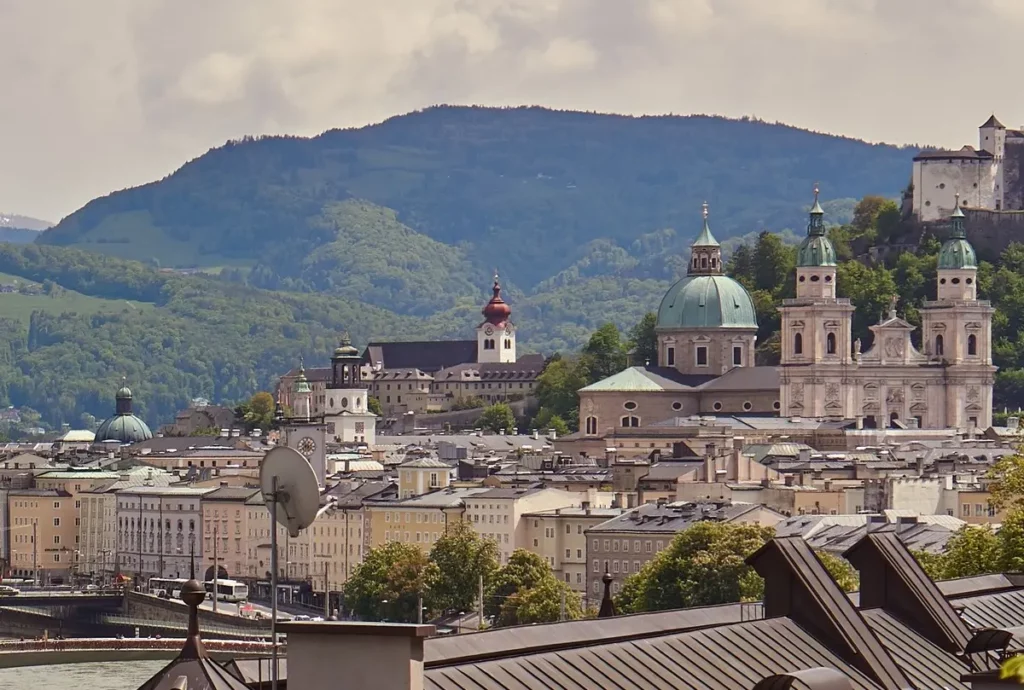
Remarkable frescoes of this period (12th century) and powerful Romanesque walls have been preserved. In 1241 Archbishop Eberhard gave the abbess the rights of a bishop. This placed the abbess on a par with the abbots of St. Peter.
In 1423, the Romanesque church burned down, and in 1464 the construction of a Gothic building began. The abbey unites a complex of various buildings of the 13th-19th centuries. The main part is closed to the public.
To be continued:
Hellbrunn Palace with its very interesting tour of water play, Salzburg museums, out-of-town excursions – part two.
Sounds of music filming locations in Salzburg and Salzkammergut
Do you enjoy the site without cookies? This means that I work for you at my own expense.
Perhaps you would like to support my work here.
Or change your cookie settings here. I don’t use personalized ads

